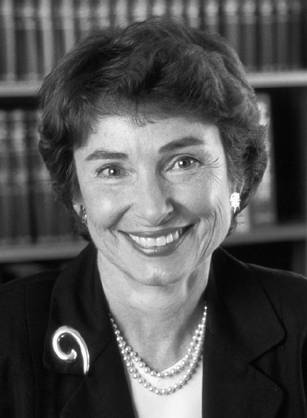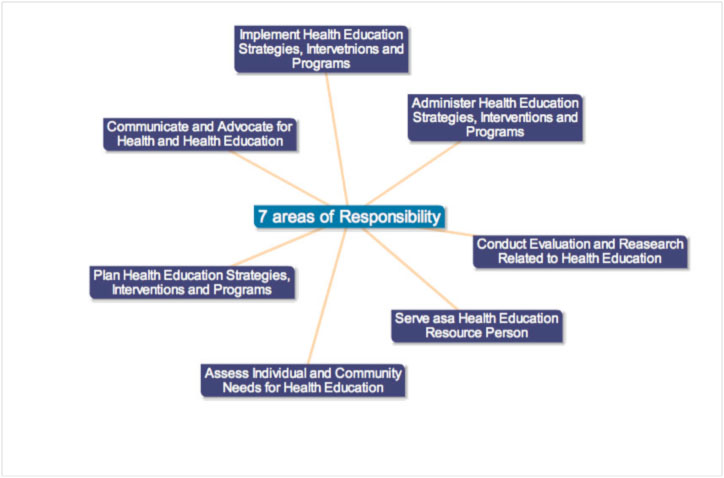|
Seitai
''Seitai'' (整体) is a form of bodywork and alternative medicine practice, originally developed as training tool within Health Education. It was developed in Japan by Haruchika Noguchi (1911–1976) in the mid-20th century. The ''kanji'' comprising the word are 整 ''sei'', regulated, coordinated, in order, and 体 ''tai'', "body, organism", therefore translated together as "the body in order". The term ''seitai'' already existed in traditional Chinese medicine for centuries. In the 1920s it was adapted and introduced Japan by Michio Takahashi, a master of ''seitai-jutsu'', and later by Noguchi from 1943. Important to its development was a regular meeting group of experts in various fields of traditional Japanese medicine, led by Noguchi, called Dainippon Rengō Chiryō-shikai.Naoki, Yoshida (2014). 整体法の成り立ち (Origine de la méthode Seitai). Excerpts translated from the Japanese by Mallory Fromm. ''Seitai'' is known in Europe due to its practice by Itsuo Tsuda ... [...More Info...] [...Related Items...] OR: [Wikipedia] [Google] [Baidu] |
Katsumi Mamine
Katsumi Mamine Miwa (March 31, 1944 – April 14, 2020) was a seitai expert and researcher. He had been a disciple of Haruchika Noguchi, the founder of seitai, and was the one who introduced and spread seitai as a culture in Catalonia, from 1973 until his death in 2020. Throughout his life, Mamine constantly delved deeper into the practice and study of seitai, highlighting that the most important aspect is its simplicity, both in the practice and the knowledge. Biography Katsumi was born in Tokyo on March 31, 1944. He was the second son of Ryoji, a physicist, and Hiroko, a woman closely linked to the cultural world and with a close relationship with the music pedagogue Shin’ichi Suzuki. Katsumi spent his childhood in a very cultural environment where music was important topic. At age ten, he was encouraged by his mother to learn about seitai, so he started to attend regularly the dojo of its founder, Haruchika Noguchi, of whom he would later become a direct disciple until hi ... [...More Info...] [...Related Items...] OR: [Wikipedia] [Google] [Baidu] |
Haruchika Noguchi
was the Japanese founder of ''Seitai''.Order, Spontaneity and the Body by Haruchika Noguchi. Tokyo, Japan, Zensei, 1985, paperback. . He established the concept of '' taiheki''. Students * * *Katsumi Mamine
Katsumi Ma ...
[...More Info...] [...Related Items...] OR: [Wikipedia] [Google] [Baidu] |
Itsuo Tsuda
S. PraninThe Encyclopedia of Aikido was a Japanese philosopher and a practitioner and teacher of aikido and Seitai. Tsuda was born in Japanese-ruled Korea. When he was 16 years old, he defied his father, who wished for his eldest son to remain home and manage his family's estate. He left his family home and begin wandering, searching for new philosophies that would free his mind. Having reconciled with his father, in 1934 he went to France, where he studied with Marcel Granet and Marcel Mauss until 1940, when he went back Japan: he studied Noh with Hosada, Seitai with Haruchika Noguchi and aikido with Morihei Ueshiba. In 1970 Itsuo Tsuda came back to Europe to disseminate the regenerative movement (or katsugen undō 活元運動, かつげんうんどう, a basic Seitai practice) and his ideas on Ki. In 1973 he published his first book, "Le Non-Faire"Paris: Courrier du Livre; Translation: "Not Doing". Sum. . Out of print; Italian Translation: "Il Non-Fare. Scuola della Res ... [...More Info...] [...Related Items...] OR: [Wikipedia] [Google] [Baidu] |
Bodywork (alternative Medicine)
In alternative medicine, bodywork is any therapeutic or personal development technique that involves working with the human body in a form involving Manual therapy, manipulative therapy, Breathwork (New Age), breath work, or energy medicine. Bodywork techniques also aim to assess or improve Posture and occupational health, posture, promote Self-awareness#Psychology, awareness of the "Bodymind, bodymind connection" which is an approach that sees the human body and mind as a single integrated unit, or to manipulate the Aura (paranormal), electromagnetic field alleged to surround the human body and affect health. See also *Mind–body interventions *Somatics *Energy medicine References {{Authority control Manual therapy Mind–body interventions Massage therapy ... [...More Info...] [...Related Items...] OR: [Wikipedia] [Google] [Baidu] |
Alternative Medicine
Alternative medicine refers to practices that aim to achieve the healing effects of conventional medicine, but that typically lack biological plausibility, testability, repeatability, or supporting evidence of effectiveness. Such practices are generally not part of evidence-based medicine. Unlike modern medicine, which employs the scientific method to test plausible therapies by way of Guidelines for human subject research, responsible and ethical clinical trials, producing repeatable evidence of either effect or of no effect, alternative therapies reside outside of mainstream medicine and do not originate from using the scientific method, but instead rely on testimonials, anecdotes, religion, tradition, superstition, belief in supernatural "Energy (esotericism), energies", pseudoscience, fallacy, errors in reasoning, propaganda, fraud, or other unscientific sources. Frequently used terms for relevant practices are New Age medicine, wikt:pseudo-medicine, pseudo-medicine, unortho ... [...More Info...] [...Related Items...] OR: [Wikipedia] [Google] [Baidu] |
Health Education
Health education is a profession of educating people about health. Areas within this profession encompass environmental health, physical health, social health, emotional health, intellectual health, and spiritual health, as well as sexual and reproductive health education. It can also be defined as any combination of learning activities that aim to assist individuals and communities improve their health by expanding knowledge or altering attitudes. Health education has been defined differently by various sources. The National Conference on Preventive Medicine in 1975 defined it as "a process that informs, motivates, and helps people to adopt and maintain healthy practices and lifestyles, advocates environmental changes as needed to facilitate this goal, and conducts professional training and research to the same end." The Joint Committee on Health Education and Promotion Terminology of 2001 defined Health Education as "any combination of planned learning experiences based on sou ... [...More Info...] [...Related Items...] OR: [Wikipedia] [Google] [Baidu] |
Kanji
are logographic Chinese characters, adapted from Chinese family of scripts, Chinese script, used in the writing of Japanese language, Japanese. They were made a major part of the Japanese writing system during the time of Old Japanese and are still used, along with the subsequently-derived Syllabary, syllabic scripts of and . The characters have Japanese pronunciations; most have two, with one based on the Chinese sound. A few characters were invented in Japan by constructing character components derived from other Chinese characters. After the Meiji Restoration, Japan made its own efforts to simplify the characters, now known as , by a process similar to China's simplified Chinese characters, simplification efforts, with the intention to increase literacy among the general public. Since the 1920s, the Japanese government has published character lists periodically to help direct the education of its citizenry through the myriad Chinese characters that exist. There are nearly 3 ... [...More Info...] [...Related Items...] OR: [Wikipedia] [Google] [Baidu] |
Traditional Chinese Medicine
Traditional Chinese medicine (TCM) is an alternative medicine, alternative medical practice drawn from traditional medicine in China. A large share of its claims are pseudoscientific, with the majority of treatments having no robust evidence of effectiveness or logical mechanism of action. Some TCM ingredients Traditional Chinese medicine#Safety, are known to be toxic and cause disease, including cancer. Medicine in traditional China encompassed a range of sometimes competing health and healing practices, folk beliefs, Scholar-official, literati theory and Confucianism, Confucian philosophy, Chinese herbology, herbal remedies, Chinese food therapy, food, diet, exercise, medical specializations, and schools of thought. TCM as it exists today has been described as a largely 20th century invention. In the early twentieth century, Chinese cultural and political modernizers worked to eliminate traditional practices as backward and unscientific. Traditional practitioners then selec ... [...More Info...] [...Related Items...] OR: [Wikipedia] [Google] [Baidu] |
Dojo
A is a hall or place for immersive learning, experiential learning, or meditation. This is traditionally in the field of martial arts. The term literally means "place of the Tao, Way" in Japanese language, Japanese. History The word ''dōjō'' originates from bodhimaṇḍa, Buddhism. Initially, ''dōjō'' were adjunct to Buddhist temple, temples and were formal training places for any of the Japanese arts ending in "''-dō''", from the Chinese ''Dao'', meaning "way" or "path". Sometimes meditation halls where Zen Buddhists practice ''zazen'' meditation were called ''dōjō''. The alternative term ''zendo, zen-do'' is more specific, and more widely used. European ''Sōtō Zen'' groups affiliated with the International Zen Association prefer to use ''dōjō'' instead of ''zendo'' to describe their meditation halls as did their founding master, Taisen Deshimaru. In Japan, any facility for physical training, including List of professional wrestling terms#S, professional wres ... [...More Info...] [...Related Items...] OR: [Wikipedia] [Google] [Baidu] |
National Diet Library
The is the national library of Japan and among the largest libraries in the world. It was established in 1948 for the purpose of assisting members of the in researching matters of public policy. The library is similar in purpose and scope to the United States Library of Congress. The National Diet Library (NDL) consists of two main facilities in Tokyo and Kyoto, and several other branch libraries throughout Japan. History The National Diet Library is the successor of three separate libraries: the library of the House of Peers, the library of the House of Representatives, both of which were established at the creation of Japan's Imperial Diet in 1890; and the Imperial Library, which had been established in 1872 under the jurisdiction of the Ministry of Education. The Diet's power in pre-war Japan was limited, and its need for information was "correspondingly small." The original Diet libraries "never developed either the collections or the services which might have made ... [...More Info...] [...Related Items...] OR: [Wikipedia] [Google] [Baidu] |
Somatics
Somatics is a field within bodywork (alternative medicine), bodywork and movement studies which emphasizes proprioception, internal physical perception and experience. The term is used in movement therapy to signify approaches based on the soma, or "the body as perceived from within", including Skinner Releasing Technique, Alexander technique, the Feldenkrais method, Gerda Alexander, Eutony, Rolfing Structural Integration, among others. In dance, the term refers to techniques based on the dancer's internal sensation, in contrast with "performance, performative techniques", such as ballet or modern dance, which emphasize the external observation of movement by an audience. Somatic techniques may be used in bodywork, psychotherapy, dance, or spiritual practices. History An early precursor of the somatic movement in Western culture was the 19th-century physical culture movement. This movement sought to integrate movement practices, or "gymnastics", related to military and athletic ... [...More Info...] [...Related Items...] OR: [Wikipedia] [Google] [Baidu] |







